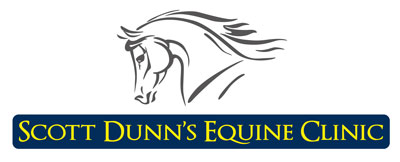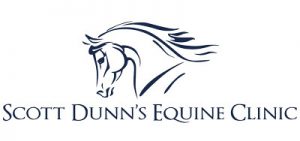Overview
The equine stomach is made up of two separate portions; the white squamous mucosa which comprises the top third of the stomach and the pink glandular mucosa which comprises the bottom two thirds. The pylorus is the exit into the small intestine.
These two separate portions have different functions and are therefore affected by different versions of the same disease. The squamous portion of the stomach holds the less acidic contents (usually pH 5-7) and the strongly acidic digestive stomach juice does not always reside here. However, the glandular portion of the stomach is where the digestive juice is produced and as this is the lower portion of the stomach chamber, this is where there is a higher density of feed material and where initial digestion occurs.
Causes
Disease of the squamous epithelium occurs when the digestive juice comes into contact more than it should with its unprotected mucosa and damages the lining. This can happen by splashing during exercise or when excess acid is produced during extended periods of starvation.
Risk factors are any circumstance that may reduce appetite, for example travel, stress, stabling or exercise. This is because feed material absorbs and neutralises the stomach acid. However, night time starvation does not affect the formation of stomach ulcers, all horses stop feeding between the hours of 3am-9am regardless as to whether forage is available to them.
Disease of the glandular epithelium can be caused by many factors and is therefore a slightly more complicated process. The glandular portion of the stomach comes into contact far more regularly with the strongly acidic digestive juice and so it has a waterproof gel barrier for protection of the lining.
Ulcers can occur in this part of the stomach following a defect in its protective barrier. This can be caused by the presence of irritant stomach contents such as coarse feed, overdose of corrosive medications and bacteria. Other causes of damage are acid dysregulation, inflammation of the stomach and reduced blood flow to the tissue causing mucosal stress.
What are the symptoms?
The clinical signs are variable between horses with some patients displaying no symptoms at all. The signs are as follows but are vague and can be inconsistent
- Variable appetite
- Slow eating
- Weight loss
- Poor body condition/hair coat
- Acute or recurrent colic
- Poor performance
- Discomfort when girth tightening
- Resistance to leg aids or grooming
- Stereotypies such as cribbing
The most important consideration is any change in behaviour whether it be appetite, manner, eating behaviour or poor performance.
Diagnosis
The most effective diagnostic procedure is endoscopic examination. This is when a veterinary surgeon passes a camera down the oesophagus and into the stomach to visualise the lining. Trial treatment is not usually recommended as treatment protocol is dependent on the location of the ulcers.
If treatment is given blindly and is ineffective, this delays the treatment of the real cause of the problem. The endoscopic examination takes between 5-15 minutes with the horse eating 15 minutes afterwards and being ridden 2 hours later. It is important to monitor ulcer healing by endoscopic examination 4 weeks after the first treatment.
Treatment
If squamous ulceration is diagnosed, the most commonly used treatment is a medication named Omeprazole which is given orally. This drug suppresses acid production and so allows the ulcers to heal. This medication should be given in the morning on an empty stomach with the horse not fed until 30-60 minutes after dosing.
If glandular ulceration is diagnosed, a different treatment protocol is required as acid suppression alone is rarely effective. Medication is also required to protect the mucosa and encourage healing of the waterproof gel barrier. There are three treatment options for glandular ulcers:
- Injectable Omeprazole (+ Sucralfate)
- Oral Misoprostol
- Oral Omeprazole and Sucralfate
Improvement is not immediate but is to be expected within the first 4-6 weeks. Squamous ulcers heal faster than glandular ulcers.
Prevention/ Management
Feeding – Feed 80% of hay between 07:00 and 19:00hh as gastric ulcers form in the daytime. Hay reinforces the gastric barrier physically and by actively absorbing acid. Alfalfa can be included to further enhance this.
Feed in the 30 minutes before exercise to limit the risk of splash ulcers and improve the blood flow to the stomach. Concentrates should be fed alongside 2-3 handfuls of a chopped hay product such as unmollassed chaff or alfalfa cubes as this is best for absorption.
A coarse mix is recommended in preference to a pelleted diet. Please cut down on high carbohydrate diets where possible. A ‘little and often’ approach to concentrate feeding is preferable to feeding one or two large meals daily.
Multiple forage sources must be provided to encourage consistent eating throughout the day. This helps as saliva production is important to act as a buffer to the stomach acid. Multiple haynets within the stable has been shown to increase forage intake.
Oil supplementation reduces acid production by up to 30%. 45-100ml of corn or rapeseed oil daily is preferred.
A fermented probiotic can be appropriate in the prevention of squamous ulcers by reducing the acidity of the stomach acid.
We recommend use of the Hestavard Gastric Supplement to coat the inner lining of the stomach to reduce the risk of further damage from acid.
During periods of pre-empted stress, prevention doses of oral omeprazole can be administered. This can be a quarter or half dose daily. Please speak to your vet for an individual recommendation.
General advice
- Provide 2 rest days per week.
- Minimise management change – introduce any changes slowly over 4 weeks.
- Minimise change in companions or carers.
- Daily tactile contact with other horses is recommended.
- Always provide hay when travelling.
- Stable mirrors can be effective in minimising stress.
- Choose turnout versus stabling based on individual preference
Please call us for further help and advice 01344 426066.

